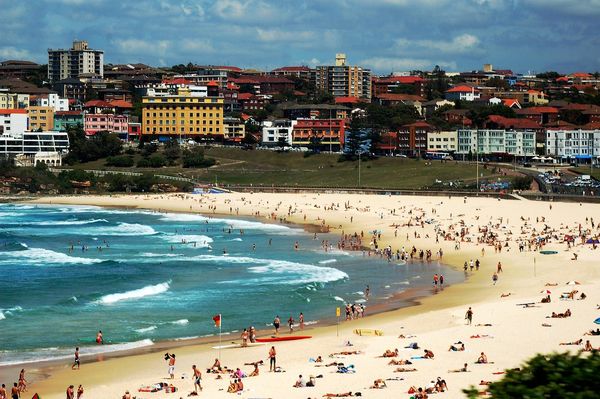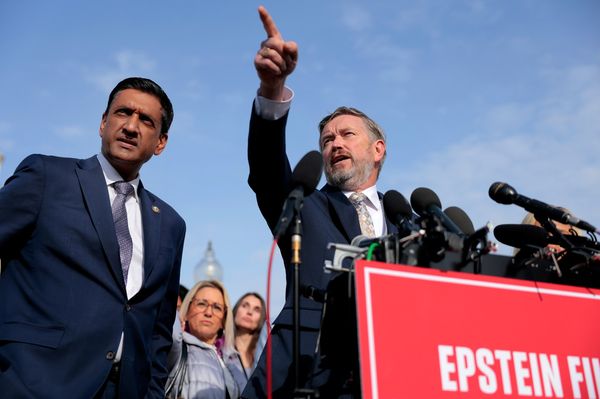
Israeli troops pressed ahead with a ground offensive into Gaza City on Wednesday, making further efforts to force more people to flee their homes and travel to overcrowded and unsafe areas in the south of the devastated territory.
The Israel Defense Forces (IDF) said on Wednesday they had carried out 150 air and artillery strikes ahead of the ground operation that began early on Tuesday morning.
Two army divisions are working their way slowly towards the city centre and are expected to be joined by a third in the coming days.
Several of the airstrikes brought down apartment blocks in the midst of tented camps inhabited by displaced people. Israel claims the buildings were being used by Hamas for surveillance.
On Tuesday night Gaza City’s al-Rantisi children’s hospital was hit. According to the Gaza health ministry, half the hospital’s 80 patients managed to flee the building but the rest, including four children in intensive care and eight premature babies, remained.
Overnight strikes killed 16 people, according to local hospitals, bringing the total Palestinian death toll in two years of war to 65,000. On Tuesday, a UN human rights commission published a report concluding that Israel has been committing genocide in Gaza.
The coast road leading south from Gaza City has been packed with families trying to flee the offensive. On Wednesday, the IDF announced the opening of a second route, through the middle of the Gaza Strip, for two days to try to encourage the exodus.
However, many residents of Gaza City and the rest of the north are very unlikely to have received any of the text messages or social media posts put out by the IDF because strikes in the region have damaged the telephone network.
Of the million Palestinians living in and around Gaza City, the Israeli military estimates 350,000 people have left and moved south over the past month. The UN estimate is 238,000, including about 50,000 in the last 48 hours.
The United Nations voiced grave concerns on Wednesday about food and other supplies running out in northern Gaza, where many are already experiencing famine, after Israel closed the only crossing there last week.
“There are grave concerns over fuel and food stock depletion in a matter of days as there are now no direct aid entry points into northern Gaza and resupply from south to north is increasingly challenging due to mounting road congestion and insecurity,” the UN’s Office for the Coordination of Humanitarian Affairs (OCHA) said in a statement.
Contrary to Israeli claims, none of the Palestinians interviewed by the Guardian in recent weeks have said they came under pressure from Hamas to stay in the city. Many residents said they had been unable or reluctant to leave for multiple other reasons.
Some are physically unable to move, weakened by many months of near starvation, and some cannot afford the costs of transport or the price of a rudimentary plastic sheeting tent at their destination.
Very many consider the south to be as dangerous as Gaza City. Israel has frequently bombed the “humanitarian zone” it established at al-Mawasi. The sprawling camp there was hit by an Israeli strike overnight, killing two parents and their child.
Many Israeli security officials, including the IDF chief of staff, Lt Gen Eyal Zamir, have privately questioned the wisdom of the offensive, in terms of its human cost and because they think there is little chance it will achieve its stated goal of the total destruction of Hamas.
There have been no security checks of the mass of people fleeing south, so most observers believe it probable that Hamas militants will regroup elsewhere. IDF officials have estimated there are between 2,000 and 3,000 Hamas and Islamic Jihad fighters ready for battle in the city centre, but IDF intelligence estimates suggest that is only a small fraction of their surviving forces.
Many Israeli observers and commentators believe the real motives for the offensive are political: to keep Israel in a state of war so as to fend off early elections in which Benjamin Netanyahu’s hard-right coalition could be unseated, and to make Gaza City uninhabitable so as to put pressure on Palestinians to leave and for other countries to receive them.
Cogat, the Israeli defence ministry body that administers access to Gaza, on Wednesday issued advice to Palestinians in the territory who wanted to leave.
Bezalel Smotrich, Israel’s far-right finance minister, described Gaza as a “real estate bonanza” on Wednesday, Hebrew media reported.
Speaking a property development conference in Tel Aviv, Smotrich said he was talking to “the Americans” and that “the demolition, the first stage in the city’s renewal, we have already done. Now we just need to build.”







